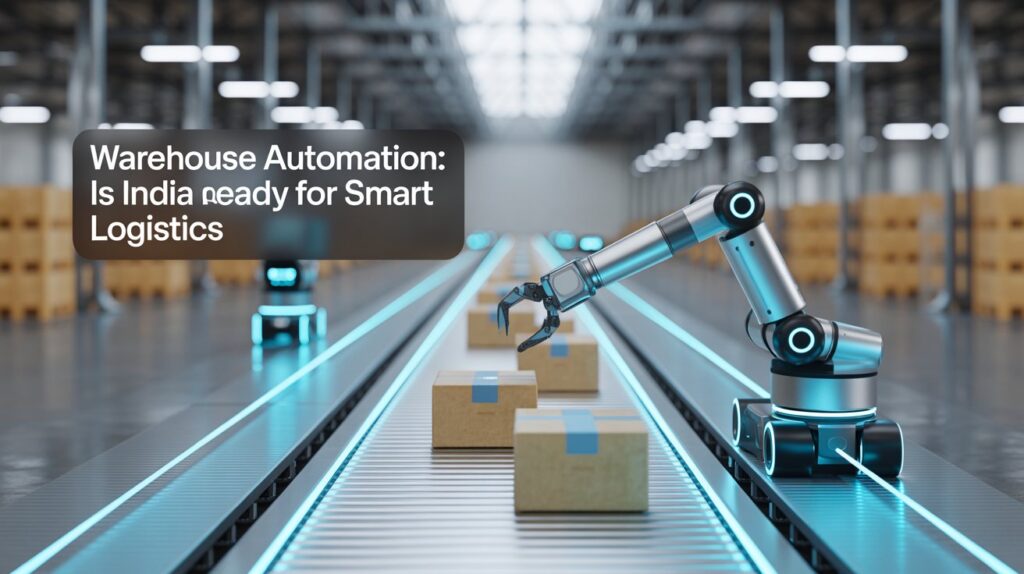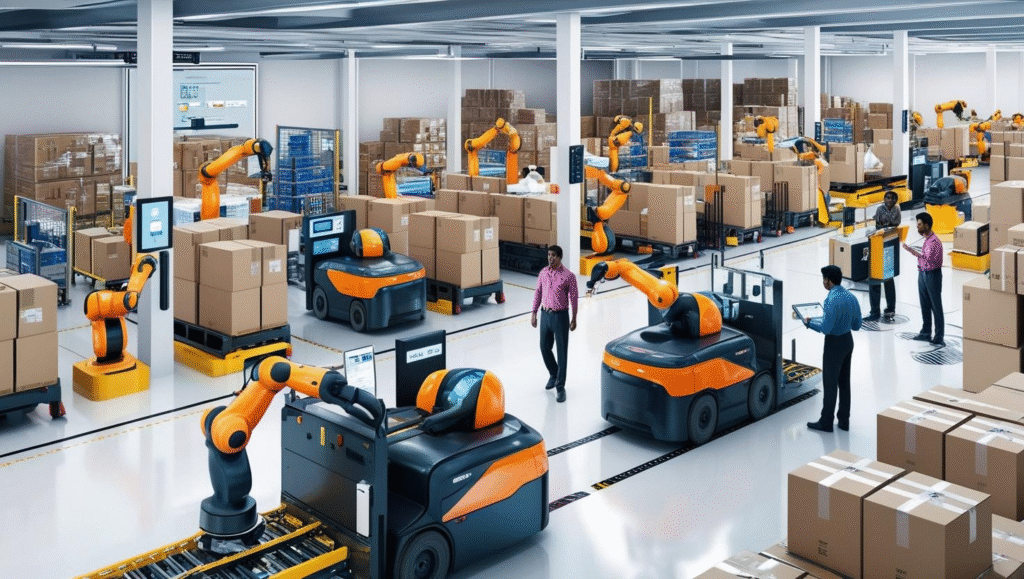
With India’s logistics industry running fast to catch up with the nation’s thriving e-commerce and manufacturing sectors, warehouse automation is becoming a game-changer in the pursuit of efficiency and scalability.
With automation technologies such as robotics, artificial intelligence (AI), and the Internet of Things (IoT) revolutionizing warehousing, smart logistics is set to lower costs, increase productivity, and improve the reliability of the supply chain.
But is India, with its singular combination of opportunity and challenge, ready to take this technological leap?
India’s warehousing industry is going through unprecedented growth due to a potential $435 billion e-commerce market by 2030 and the government’s ‘Make in India’ program.
Warehouses play a pivotal role in enabling industries such as retail, pharma, and automotive, and demand is climbing in Tier 2 and Tier 3 cities such as Coimbatore, Guwahati, and Visakhapatnam.
The warehousing sector is likely to touch 4.4 billion square feet in 2030, driven by logistics centers such as Mumbai, Delhi-NCR, and Bengaluru, reports Knight Frank India.
However, high cost of operations and inefficiencies—India’s logistics costs are 13-14% of GDP against 8-9% in developed countries—are encouraging companies towards automation.
Warehouse automation means installing technologies like automated storage and retrieval systems (ASRS), robotic picking arms, and AI-based inventory management to automate processes.
Indian innovators Addverb Technologies and GreyOrange are at the forefront. Addverb’s robots, installed in warehouses like Marico’s distribution centers, pick and pack, cutting down on labor and errors.
GreyOrange’s AI-driven solutions maximize inventory for the likes of e-commerce leaders Flipkart, reducing order fulfillment times by as much as 50%. These products help warehouses handle thousands of orders per day, fulfilling same-day delivery needs.
Government policies are fueling adoption. The National Logistics Policy (NLP) and PM Gati Shakti encourage digitalization and infrastructure growth, with multi-modal logistics parks (MMLPs) combining automated warehouses.
The Unified Logistics Interface Platform (ULIP) of the Logistics Division simplifies sharing data, allowing real-time tracking. Incentives such as the Production-Linked Incentive (PLI) scheme to manufacture electronics are also creating demand for smart warehouses to facilitate just-in-time production.

In Bengaluru, Amazon’s automated fulfillment centers utilize IoT sensors and conveyor belts to handle seasonal volumes, serving as a benchmark in efficiency.
Economic advantages are persuasive. A 2023 report by the Confederation of Indian Industry (CII) put the estimate of cost savings for warehousing at 20-30% due to automation, thereby enhancing profitability for Micro, Small, and Medium Enterprises (MSMEs), which control 40% of India’s logistics industry.
Automation also generates employment in areas of robotics maintenance, software development, and data analytics, compensating for fears of job displacement.
For example, Falcon Autotech’s use of 150 robots in 10 Indian cities has created more than 200 system integration jobs requiring skill.
However, India has a huge challenge to implement intelligent logistics.
The initial capital required for automation—Rs. 5 crore to Rs. 50 crore for a mid-sized facility—is a hindrance for MSMEs that rule the sector.
Lack of access to cheap credit worsens this, even with initiatives such as the Credit Guarantee Fund Trust for Micro and Small Enterprises (CGTMSE). Infrastructure lacunae, especially in Tier 2 towns, hamper connectivity with MMLPs and ports, decreasing the effectiveness of automation.
A tweet by @LogisticsIndia pointed out that unreliable power supply in semi-urban locations gives a jolt to automated systems, a problem voiced also by warehouse operators in Uttar Pradesh.
Shortages of skilled labor are another issue. Managing sophisticated systems demands knowledge of AI, robotics, and data analysis, but India’s labor force is lagging behind. Although initiatives such as the Skill India Mission are imparting training to young people, demand continues to exceed supply, with just 3% of the logistics sector employees skilled in digital tools, according to a 2024 report.
Environmental concerns also loom—automated warehouses consume significant energy, and without green technologies like solar-powered systems, they risk increasing carbon footprints.
Pressure comes from international competitors. Foreign companies such as KION Group and Swisslog are investing in India, keeping homegrown innovators on their toes to go large. At the same time, regulatory issues, including differences across states in compliance, hold back automation initiatives.
Experts such as Vineet Agarwal of the CII Logistics Committee insist that standardized policies and public-private partnerships are needed to bring automation within reach of smaller players.
India is slowly becoming more ready. The government initiative to have 35 MMLPs, with investments such as Rs. 1,200 crore for Chennai MMLP, is building ecosystems that make automated warehouses successful.
Startups such as WareIQ are providing cloud-based automation solutions, making smart logistics cost-effective for SMEs. Implementation of 5G technology is increasing IoT connectivity, allowing real-time analytics of data in warehouses.
To wholeheartedly adopt smart logistics, India has to overcome cost, skill, and infrastructure hurdles.
Upscaling training schemes, providing sector-specific subsidies to MSMEs, and including renewable energy in warehouse planning are essential measures. Streamlining regulations and encouraging cooperation between startups, international players, and the government will also be key drivers.
As India’s industrial aspirations expand, warehouse automation may become the trigger for a slimmer, more efficient logistics industry—if the country can steer through the road ahead.
